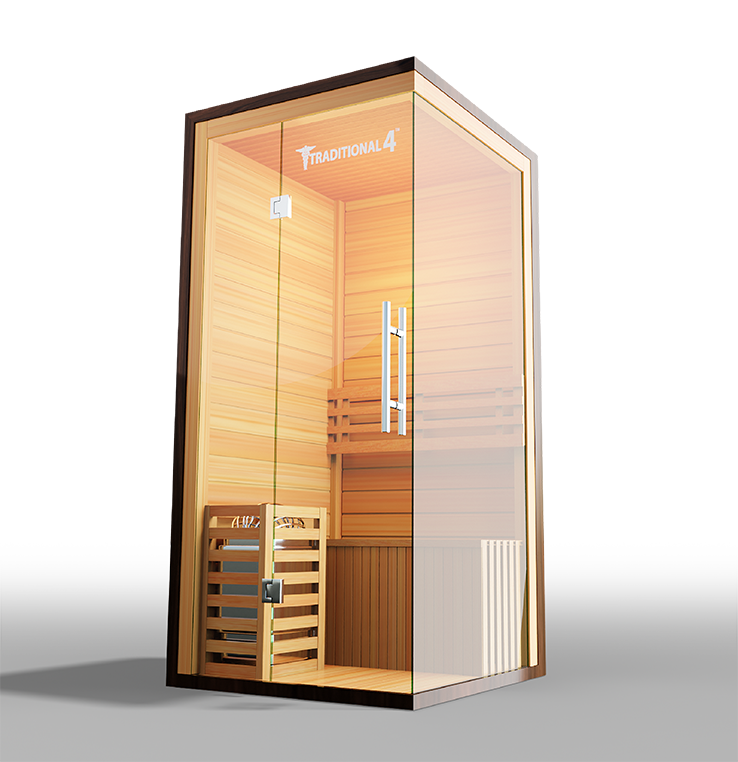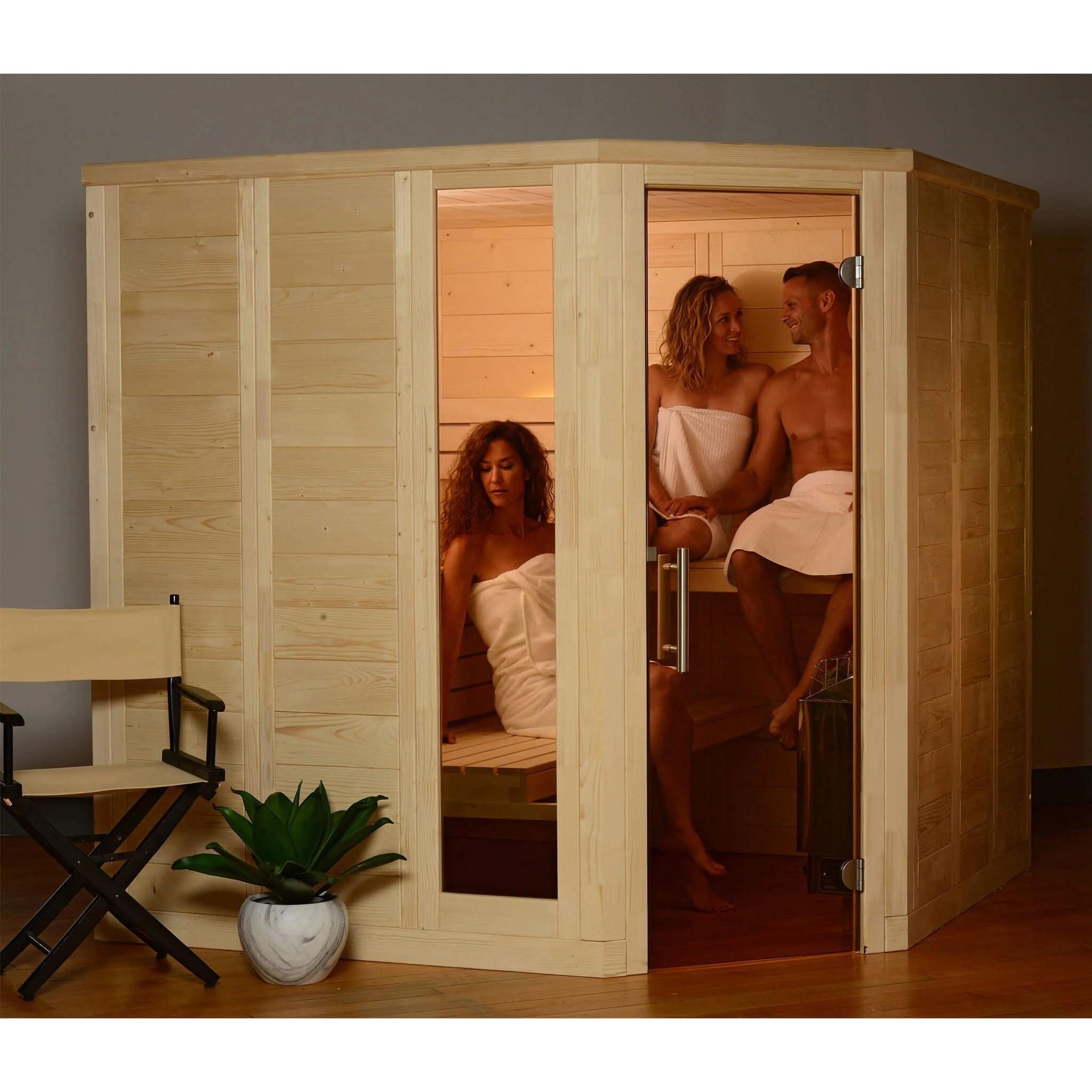The Ultimate Guide To Traditional Sauna
The Ultimate Guide To Traditional Sauna
Blog Article
What Does Traditional Sauna Do?
Table of ContentsThe Of Traditional SaunaExamine This Report on Traditional SaunaThe Buzz on Traditional SaunaThe Best Strategy To Use For Traditional SaunaThe 8-Minute Rule for Traditional Sauna
Most of the weight shed in a sauna is water loss and is re-gained upon rehydrating. Without a question sauna can be an important component of a healthy and balanced weight loss program. To look at the differences between typical and IR saunas, I will divide these into proven, academic, and fabricated differences.Thus, the hottest factor in the saunawhich is at the ceiling directly over the sauna heateris commonly between 185 and 190 F. Claims that a traditional sauna surpasses 200 F is simply not true and not relevant for electrical saunas marketed in the United States. The temperature for a far-infrared sauna is normally established between 120 and 140 F; however, unlike the typical sauna, the goal in and IR space is not to accomplish a heat.
As a result of this, the temperature difference is practically unnecessary, because extreme sweating causes both sauna types, however the approach of heating up the body is various. In an IR sauna the bather will certainly feel warm and will sweat a lot, but at much reduced temperatures. Traditional Sauna. Thus, if the goal is to invest longer time periods in the sauna, the IR sauna is a good selection

A Biased View of Traditional Sauna

When the high temperature level is achieved, the elements cycle on and off to keep the high temperature. Traditional Sauna. The majority of standard sauna customers appreciate putting water over the rocks to produce vapor to raise sauna humidity levels. The advantages of pouring water over the rocks include: making the area extra comfy, moistening the nasal flows, and permitting the usage of aromatherapy by blending necessary oils with the water
In a far-infrared sauna, the warmth waves penetrate the body to successfully heat up the body and raise the body core temperature level. To accomplish this raised temperature level, Far-infrared emitters produce infrared energy which is close to the same wavelength as that which the body naturally emitsoften described as the "Important Variety" of 7 to 14 microns), so the power is well obtained by the body.
When the energy goes into the body, it triggers the body temperature to increase and inevitably results in perspiration. In an infrared sauna it is very important for the emitters/heaters to continue to be on almost continuously. Because there is no mass of rocks to maintain warmth, the sauna will certainly cool down if the emitters shut down.
All about Traditional Sauna
As stated above, the sauna bather in an infrared area desires to position himself before running emitters to obtain maximum gain from the warm. The heating time for both rooms can be extremely different, depending upon how the areas are used. For a conventional sauna, a bather needs to enable 30-40 minutes for the area to accomplish a preferred temperature level and to correctly pre-heat the rocks.
A well constructed sauna will typically attain a temperature level of 150-160 F in concerning 30-40 minutes. For hotter temperature levels, the room may need to warm for a longer period. Once the space attains set temperature level, the heater will cycle address on and off, usually running regarding 50% of the time. The shielded wall surfaces and the heated rocks will keep the space warm and at steady temperature levels.

Typical saunas have a tendency to be bigger (for this reason utilize more electrical power) than infrared saunas, although typical saunas are absolutely readily available in one and two person sizes. For a two-person typical sauna, 5x6 or 5x7 dimension is most popular. The leading bench can pleasantly seat two or 3 individuals and is likewise long enough to relax during the sauna session.
The Buzz on Traditional Sauna
The ordinary cost per kWH of power in the U.S. is about $0.11 - Traditional Sauna, so a More Bonuses 4.5 kW heating unit will certainly cost about $.50 to run for one hour, if the heating system runs continuously for one hour. Generally a sauna heating system will compete 75% of the very first hour and 50% of succeeding hours on because the components cycle once the set temperature is attained
A 2 person far-infrared space is usually literally smaller than a traditional sauna, typically concerning 4' x 4' or smaller. The IR furnace is usually 1.5-1.7 kW making use of a 120 volt 15 amp plug-in service. Because the area can be made use of sooner than a sauna room, we will certainly think the room is used for to of an hour find out here now including warm up time.
There is a hardly ever discussed difference in the social experience between the two rooms. While our culture has actually shed some of the social benefit of the typical sauna experience, it can be very socially satisfying. From family members time in the sauna, to heart-felt discussions with loved ones, to sauna partiesthe standard sauna experience can result in intimate mingling.
Little Known Facts About Traditional Sauna.
Most higher end infrared spaces include tinted light therapy, stereo and full-glass fronts. The dimension of most areas enable 2 individuals to easily use the space, while some styles may enable for a 3rd or 4th individual to utilize the space. Personalized infrared areas are additionally available, with area dimensions offered approximately 7' x 8' x 7' high.
Report this page